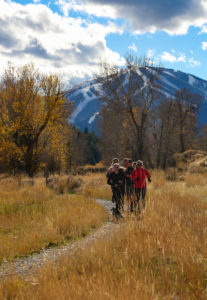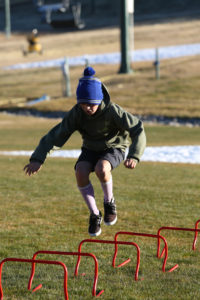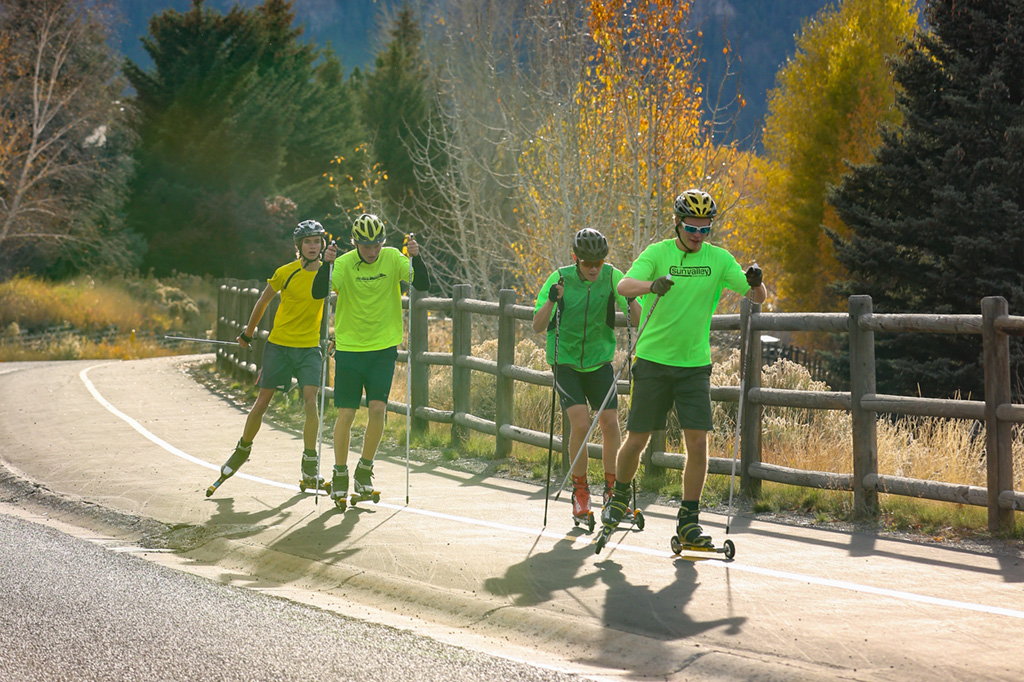One reason Mikaela Shiffrin is the finest female slalom skier in the history of ski racing is her dedication to preseason ski conditioning. It is also one reason she has suffered fewer injuries than many others in an endeavor in which injury is nearly unavoidable. Her precautionary wisdom and practice help her win races, avoid injury, and, when she has been injured, recover quickly.
While Shiffrin is the gold standard for performance, conditioning and avoidance of and recovery from injury, the importance of preseason ski conditioning is no less for recreational skiers, from beginner to expert, than for world-class racers.

Running builds stamina, as well as bone mass, which reduces injuries to hip, knee, and ankle joints.
Preseason conditioning has always been a prudent approach to skiing, but in recent years it has become something more than that as ski equipment technology has improved the standard of skiing while increasing the severity, quantity and types of stresses on the skier’s body.
Scott McGrew has been alpine program director of the Sun Valley Ski Education Foundation since 2014 and has worked as a coach for the SVSEF since 2002. He explains pre-season conditioning like this: “Modern pre-season training is designed to develop functional strength that replicates the skiing experience, not to turn bodies into slabs of meat. We emphasize ‘mobility’ rather than ‘flexibility,’ especially with hip flexors. We focus a lot on flexion, extension, abduction and rotation of the hips to boost mobility, improve performance and as a tool of preventing injury. Particularly with the girls, because the structure of their hips is different from the boys, we do a lot of abduction work with bands. And we do all we can to keep pronation of the feet to a minimum, as strong alignment is critical to good, safe skiing.”
Like McGrew, Karoline Droege of Zenergy Sports Rehab Clinic is a Sun Valley native who grew up as a ski racer for SVSEF and raced for the University of Utah from 1989 through 1993, where she earned a degree in exercise and sports science. Droege has a master’s degree in physical therapy from Idaho State University.
“Preseason preparation for skiing is the best insurance policy for a fun, injury-free season, but it is obviously not a guarantee,” Droege explained. “Depending on a person’s activity level during summer, I advise six to 12 weeks of focusing on building

Agility exercises improve coordination and help develop explosive muscle power.
strength, endurance and flexibility before the ski season. If you spent your summer strenuously cycling and hiking, and you’re feeling fit going into fall, you can rely on six to eight weeks of preseason training. If you’re approaching the end of summer with lackluster fitness, you should devote 10 to 12 weeks to training before the season.”
Droege notes that strength gains are best achieved by working out three days per week but, more importantly, using a high intensity level that leaves you more than moderately fatigued at the end of the workout. Endurance is developed with a good aerobic conditioning program three to five days a week. And mobility comes from daily dedication to stretching, self-myofascial release, yoga, Pilates and/or massage.
Most common ski injuries are to the lower extremities, but preseason training should focus on whole-body functional exercises, including the lower extremities and core stabilizers, and the upper body.
Richard Odom, Wood River Valley’s best-known yoga instructor, says that flexible hips from a regular yoga practice are insurance against knee injury from skiing.
Preseason ski conditioning, in general, is insurance against injury for the rest of the body.


